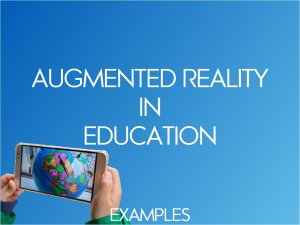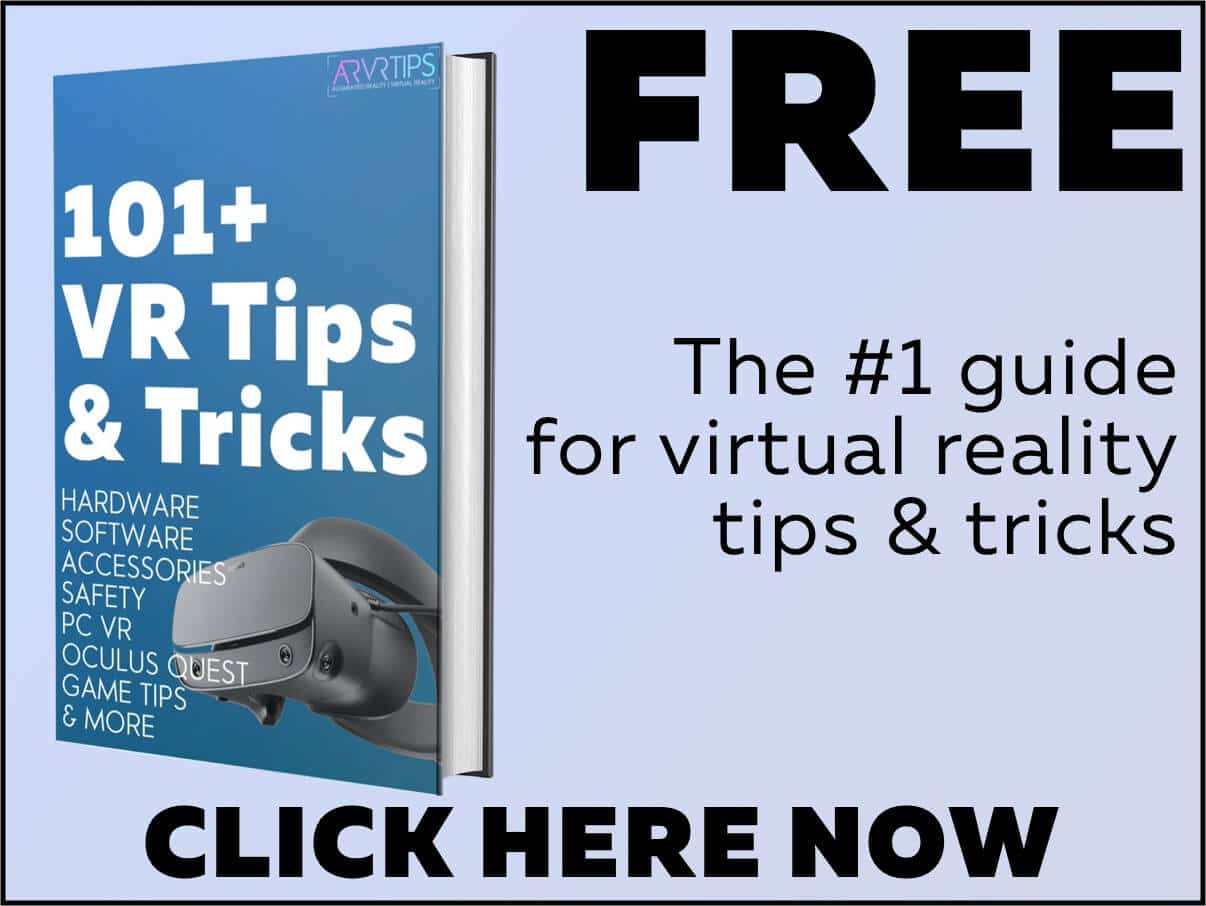Augmented reality in education is one of the most interesting opportunities for teachers, schools, classrooms, and self-teaching. AR is a really trendy, from games that teach you skills to apps that make learning easier. Check out real-world examples of augmented reality in use for learning.
AR education resources will only increase as AR glasses and headsets become mainstream. The Apple Vision Pro, Meta Quest Pro, and Meta Quest 3 have new AR hardware and tools which will enable and drive interest in more tools.
If you have any other educational AR examples, comment at the bottom of this post!
- Augmented Reality in Education Examples
- Language Translation
- Car Maintenance
- Interactive Books
- STEM Kids Toys
- Learning Games
- 360 Degree Videos
- Programming: Making Games and Apps
- Art and Design
- Anatomy Education
- Astronomy Learning
- Geography Lessons
- Interactive Classroom Lectures
- Virtual Field Trips
- AR in Literature Studies
- Environmental Education
- Chemistry Learning
- Learning About Archaeology
Related Content:
- AR/VR Toolkit for learning how to design, develop, and integrate AR and VR into your business.
- Real world augmented reality examples
Augmented Reality in Education Examples
Language Translation

Google made headlines a few years ago with their Translate app, which can detect words in images and translate them into another language. It was one of the first real-world AR examples. You point your phone at a site in any language and the app will translate the image to English (or another language) in real time.
Apple now has its sophisticated version of the Translate app as well. You can freely translate between 12 different languages in real-time.
Translate has made traveling abroad easier than ever before. You can translate and understand signs, menus, and other instructions automatically and without any language training.
Car Maintenance
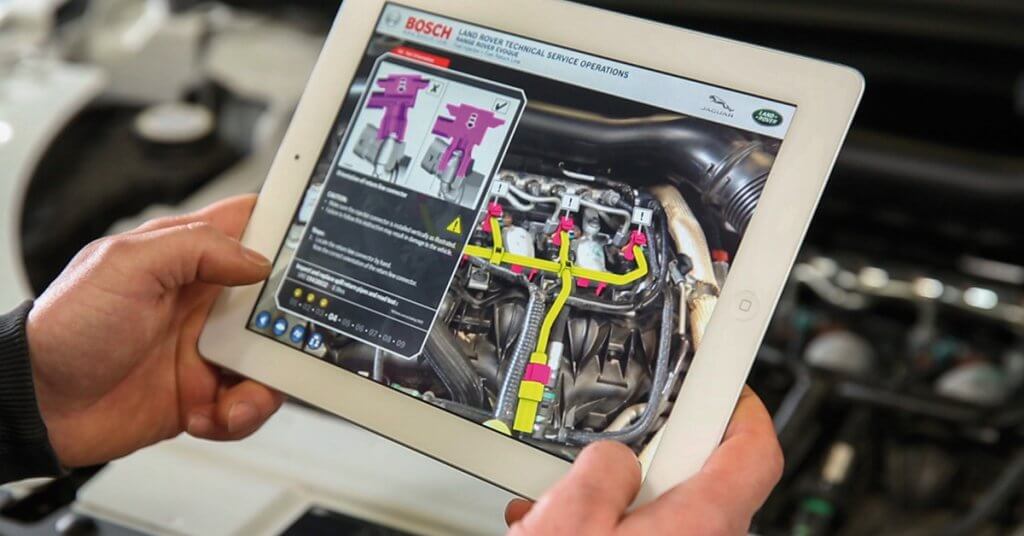
AR apps like I-Mechanic and WorxAR allow you to digitally view car diagnostic and maintenance information. The app suggests potential fixes and points out trouble areas with your vehicle. This allows people without car maintenance experience to understand and learn about issues with their vehicles.
Youtube has led to an increase in shared knowledge. Anybody can learn basic survival and maintenance skills by watching videos on the subject. The next logical step is to convert these tutorial guides into an augmented reality for education example.
What if AR could help you build your own home? And could audit your results in real-time as you built it. Pretty cool, huh?
Interactive Books

Companies like Holo Popups have created interactive augmented reality children’s books. Using your phone, you can see characters come to life as you read, entertaining kids and making reading fun.
Other possibilities include digitally replaying or simulating moments in history or using digital elements to teach math and science courses.
Click here to check out some augmented reality books.
STEM Kids Toys
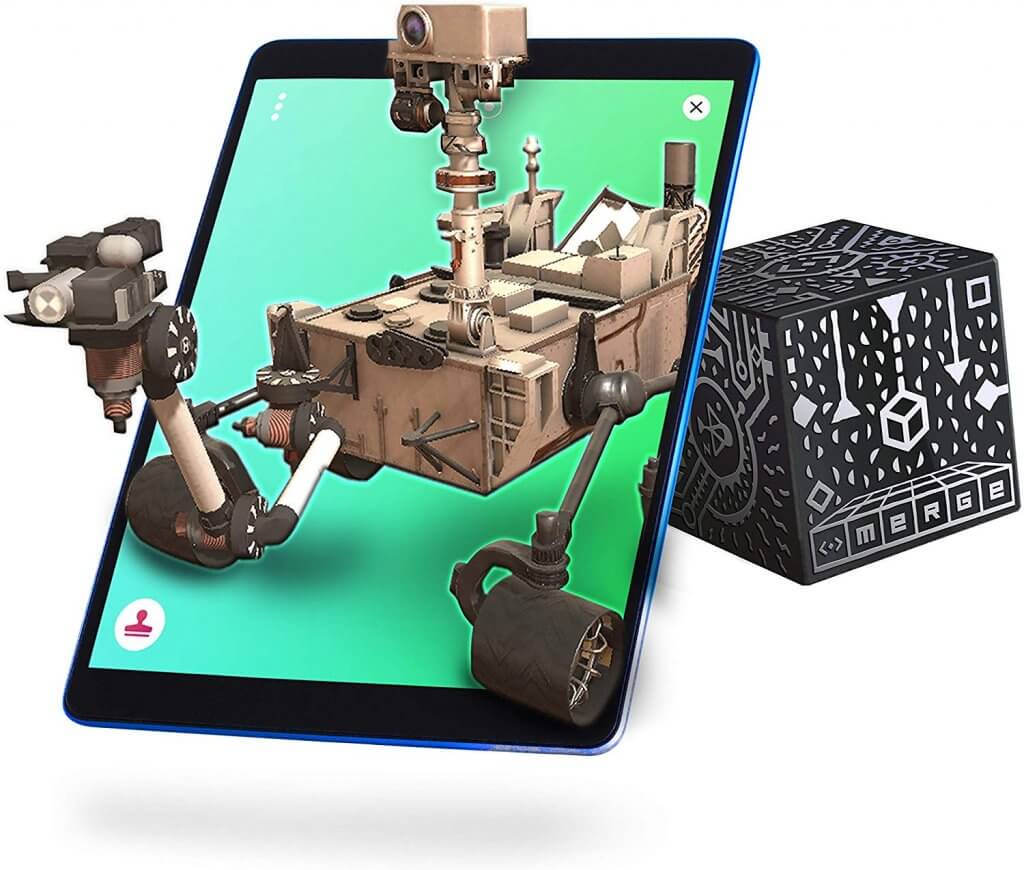
STEM stands for Science, Technology, Engineering, and Math. Teaching these concepts to your kid early can help them get into schools and jobs later in life.
Toys like the MERGE Cube teach kids about these concepts using augmented reality. There is a whole suite of MERGE Apps that use the cube to bring objects to life. There are games you play with the cube to improve your hand-eye coordination. Educational MERGE apps let you learn about the parts of the heart and test you on your ability to identify pieces.
Even better is that MERGE has made their cube available for free. You can print out a cube on paper and use all apps with it instead of buying the actual cube. This enables teachers to bring augmented reality to education like never before.
Learning Games
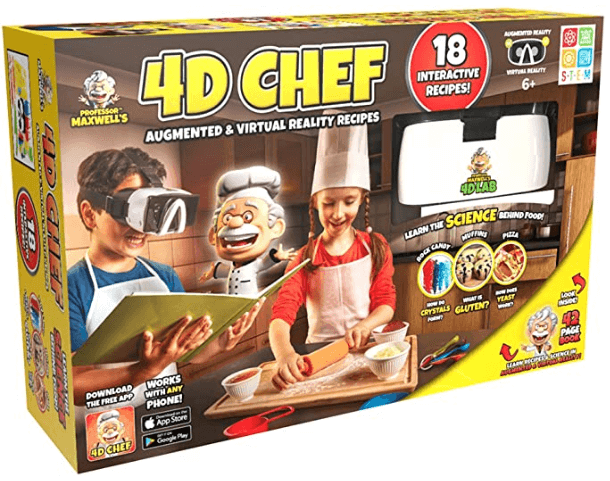
Augmented Reality is a proven method for teaching kids new concepts in a fun and creative way. One example is the Professor Maxwell Science Kit, which lets kids experiment using AR goggles to guide them in creating food and experiments.
AR goggles help to bring the digital world right at your fingertips and teach you real-world applications younger than ever before.
Another example is the Explore World, an interactive AR geography map that teaches you about the world in different ways. As soon as these AR learning games become a school curriculum, the technology and interest opens up fast for new users.
360 Degree Videos
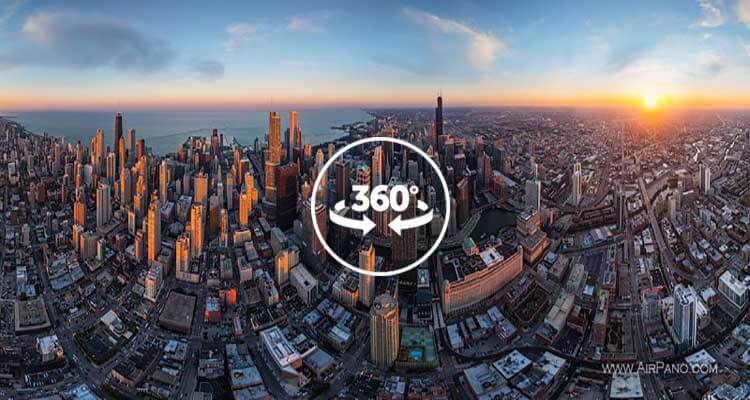
While technically more in the VR space, 360-degree videos allow you to visit and explore places like never before. Students can watch virtual tours and 360-degree immersive videos and learn about anything while staying where they are.
Teachers can use a service like VR Sync to load 360-degree videos onto VR headsets or phones and then play files in sync simultaneously on all devices in their classroom. This allows all students to experience new places in sync at the same time while the teacher narrates or teaches concepts.
Programming: Making Games and Apps
Programming is being integrated into school curriculum around the world earlier than ever before. Studies suggest that learning programming concepts early in life can enable kids to understand Science, Math, and Art concepts easier later on.
Companies like CoSpaces EDU promote and teach programming using augmented and virtual reality to simplify concepts. They make it easy to learn about augmented reality in education while using AR at the same time.
There are thousands of resources on the internet for learning programming – like our VR development section. This allows anyone to learn Unity XR development.
Art and Design

With AR applications such as SketchAR, students can learn to draw and improve their artistic skills. The app provides virtual images and templates that users can trace or imitate on real-world surfaces.
New headsets like the Apple Vision Pro and Meta Quest Pro can draw and create art in 3-dimensions. The Quest Pro even has its own stylus which plugs into your controller and gives you extra control.
This is a fun and engaging way to learn and enhance art skills, opening up new creative possibilities.
Anatomy Education
AR apps like Complete Anatomy offer immersive learning experiences for medical students. Students can view and interact with the human body in 3D, visualizing structures such as bones, muscles, and organs in great detail.
This offers an invaluable resource for medical education, improving understanding and retention. Medical students can view things that were not possible before.
Astronomy Learning
Applications like SkyView offer a hands-on approach to learning about the cosmos. Users can identify stars, constellations, satellites, and other celestial objects by looking up to the sky.
These apps use your real location to show off stars in their exact spot in the sky. This real-time AR tool can spark curiosity and promote a deeper understanding of our universe.
Geography Lessons
Students can interact with 3D mathematical equations and geometric models superimposed onto their real environment using AR applications such as GeoGebra AR. This can make abstract concepts like geometry more tangible, facilitating a better understanding of spatial relationships and dimensions.
Interactive Classroom Lectures
AR can help to make classroom lectures more interactive and engaging. For instance, using AR markers on students’ desks, teachers can project 3D models or interactive quizzes related to the lecture. This can make learning more fun and memorable, promoting student participation.
Virtual Field Trips
AR technology can bring the world to the classroom through virtual field trips. Google Expeditions, for instance, allows students to explore distant places, historical sites, and even outer space, all from their classrooms. This enhances the learning experience and provides access to places that would be otherwise impossible to visit.
AR in Literature Studies
Augmented reality can be used to enrich literature studies. For instance, AR apps can bring characters and scenes from books to life, providing a more immersive reading experience. This can help to improve comprehension and foster a greater interest in reading.
Environmental Education
AR can be a powerful tool for teaching about environmental issues. Apps such as WWF Free Rivers place a fully interactive landscape on any flat surface, enabling users to explore and understand the environmental impact of human actions. This can foster a greater sense of environmental stewardship in students.
Chemistry Learning
AR apps such as Elements 4D allow students to interact with virtual representations of chemical elements. By combining different elements, students can visualize chemical reactions in a safe and interactive way, promoting a better understanding of chemistry.
Learning About Archaeology
AR can offer students an immersive experience of historical sites and archaeological digs. For instance, apps such as Virtuali-Tee allow users to embark on a virtual excavation, uncovering artifacts and learning about historical contexts interactively. This can foster a greater interest in history and archaeology.
These examples illustrate the transformative potential of AR in education. As the technology continues to advance, we can expect even more innovative and immersive learning experiences.
Do you have any other examples of augmented reality in education? Do you represent a toy, game, or device that helps students learn with AR? Get in touch with us and we will make sure to add it to this list!

